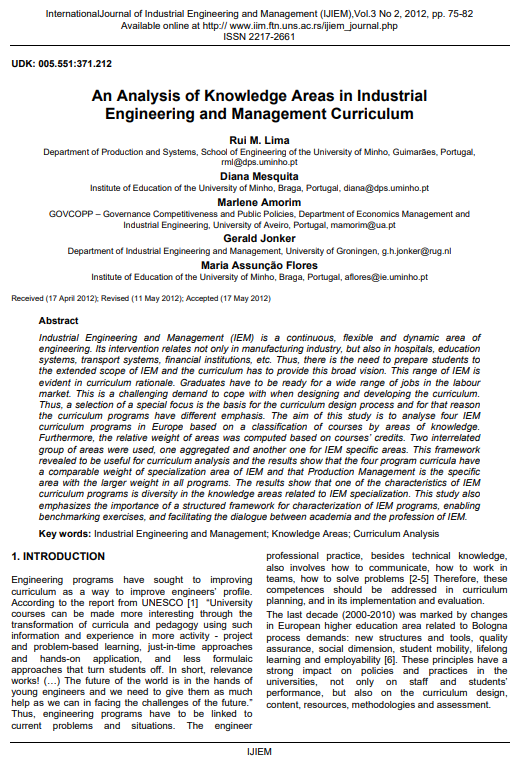An Analysis of Knowledge Areas in Industrial Engineering and Management Curriculum

Published 2012-06-30
abstract views: 28 // FULL TEXT ARTICLE (PDF): 0
Keywords
- Industrial Engineering and Management,
- Knowledge Areas,
- Curriculum Analysis
How to Cite
Copyright (c) 2023 International Journal of Industrial Engineering and Management

This work is licensed under a Creative Commons Attribution 4.0 International License.
Abstract
Industrial Engineering and Management (IEM) is a continuous, flexible and dynamic area of engineering. Its intervention relates not only in manufacturing industry, but also in hospitals, education systems, transport systems, financial institutions, etc. Thus, there is the need to prepare students to the extended scope of IEM and the curriculum has to provide this broad vision. This range of IEM is evident in curriculum rationale. Graduates have to be ready for a wide range of jobs in the labour market. This is a challenging demand to cope with when designing and developing the curriculum. Thus, a selection of a special focus is the basis for the curriculum design process and for that reason the curriculum programs have different emphasis. The aim of this study is to analyse four IEM curriculum programs in Europe based on a classification of courses by areas of knowledge. Furthermore, the relative weight of areas was computed based on courses’ credits. Two interrelated group of areas were used, one aggregated and another one for IEM specific areas. This framework revealed to be useful for curriculum analysis and the results show that the four program curricula have a comparable weight of specialization area of IEM and that Production Management is the specific area with the larger weight in all programs. The results show that one of the characteristics of IEM curriculum programs is diversity in the knowledge areas related to IEM specialization. This study also emphasizes the importance of a structured framework for characterization of IEM programs, enabling benchmarking exercises, and facilitating the dialogue between academia and the profession of IEM.
Article history: Received (17 April 2012); Revised (11 May 2012); Accepted (17 May 2012)

